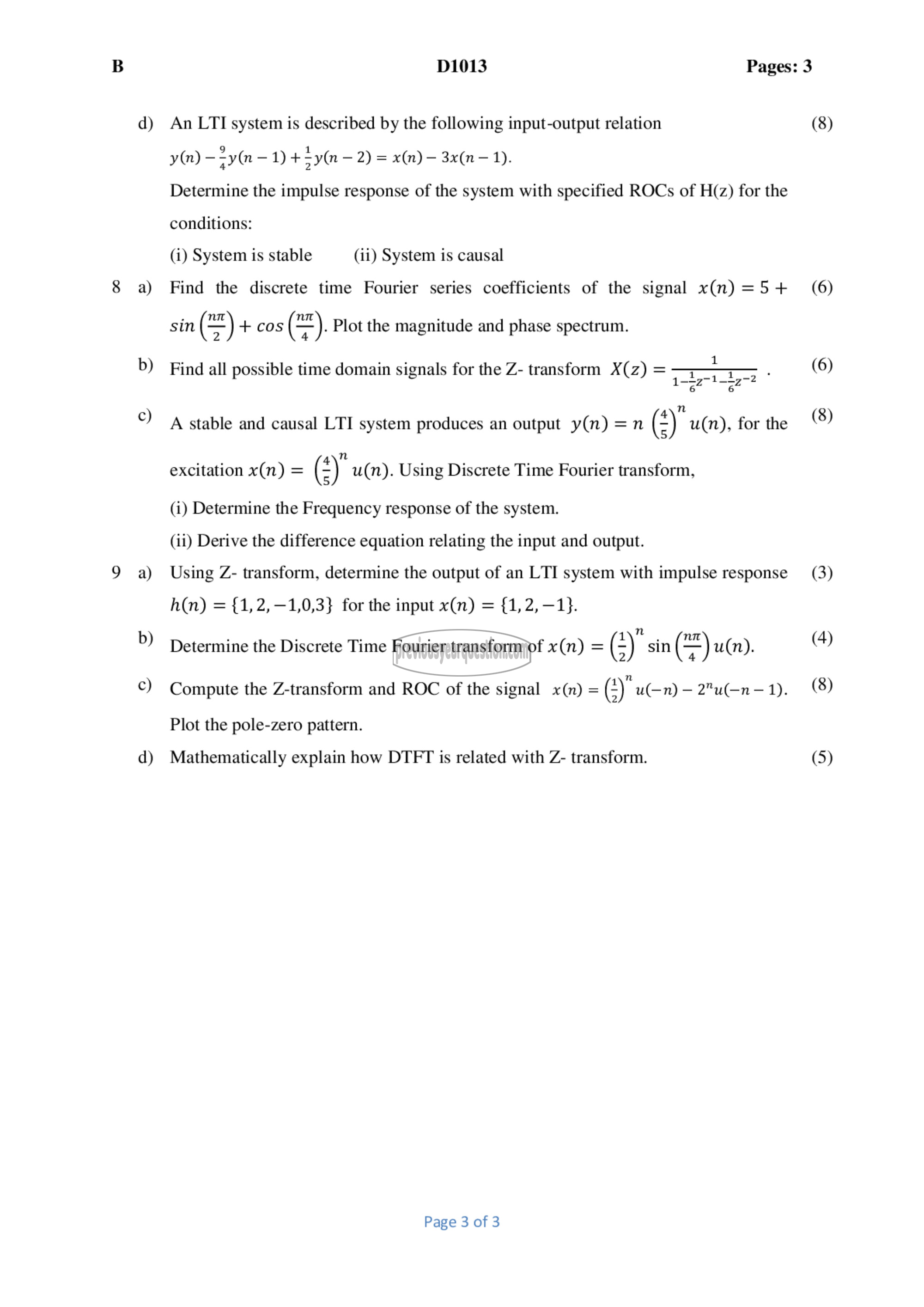APJ ABDUL KALAM TECHNOLOGICAL UNIVERSITY Previous Years Question Paper & Answer
Semester : SEMESTER 4
Subject : Signals & Systems
Year : 2019
Term : MAY
Scheme : 2015 Full Time
Course Code : EC 202
Page:3
d)
a)
b)
0)
a)
b)
0)
6)
11013 Pages: 3
An LTI system is described by the following input-output relation
y(n) ~ + - 1) + 39" - 2) = x(n) - 3:00 1).
Determine the impulse response of the system with specified ROCs of H(z) for the
conditions:
(i) System is stable (ii) System is causal
Find the discrete time Fourier series coefficients of the signal x(n) =5 +
sin (=) + cos (=) Plot the magnitude and phase spectrum.
1
Find all possible time domain signals for the Z- transform X(z) = جس അ *
6 6
n
A stable and causal LTI system produces an output y(n) =n 8 u(n), for the
⋅⋅ 4\" ⋅ ⋅ Time Fouri
excitation x(n) = 6 u(n). Using Discrete Time Fourier transform,
(i) Determine the Frequency response of the system.
(ii) Derive the difference equation relating the input and output.
Using Z- transform, determine the output of an LTI system with impulse response
h(n) = {1, 2, -1,0,3) for the input x(n) = {1, 2, —1}.
⋅ ⋅ ہے F ⋅ ↥∏⋅ 7
Determine the Discrete Time Fourier transform of x(n) = 6 sin (=) u(n).
n
4
Compute the Z-transform and ROC of the signal x(n) = (६) "൧൭ — 2™u(—n-1).
Plot the pole-zero pattern.
Mathematically explain how DTFT is related with Z- transform.
Page 3 of 3
(8)
(6)
(6)
(8)
(3)
(4)
(8)
(5)
